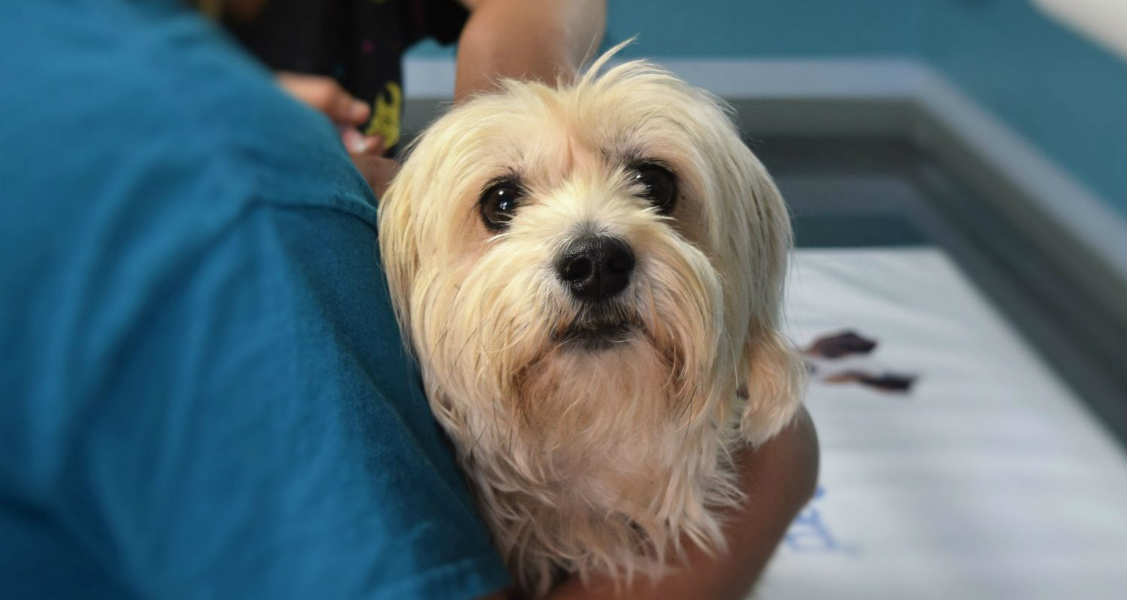Treating a Diabetic Pet – Not as Bad as You Think
By: Dr. Ryan Llera, B.Sc., DVM | Jun 25, 2018

So your cat or dog has just been diagnosed with diabetes…now what? Certainly, the first few minutes of being told this and the subsequent discussion with your veterinarian can seem like a gigantic mountain of information and work but it’s something you’re willing to do for your pet right? It is important that you and your veterinarian get on the same page with regards to your diabetic pet. Some patients will be straight-forward in their beginning management while others will be more complicated.
Diabetics are often sorted into two broad categories (which I’ll relate to human medical terminology). Insulin-dependent diabetes, which primarily affects dogs, and non-insulin dependent diabetes which a majority of the time affects cats. Non-insulin dependent doesn’t, however, mean that your cat won’t need insulin injections. Aside from the part about insulin, we also need to address potential diet changes and continued monitoring. If you are a diabetic patient yourself, you already have a headstart on understanding this condition. But take note that your cat or dog is clearly not a small version of a person.
Insulin Injections
Most patients will need insulin, especially in the beginning. All dogs will need insulin but some cats will start on it and may go into remission and it could be discontinued. The first thing I must say is that you should NEVER change your pet’s insulin dose without discussing it with your veterinarian. There are very few exceptions to this rule. There are several different types of insulin and it will be up to your veterinarian to decide which to use based on the individual patients’ health and with the vet’s knowledge and comfort level with the particular insulin. Personally, I prefer Caninsulin (or Vetsulin) for dogs as it is porcine based and is identical to the canine structure. For cats, the general consensus is to use Lantus (glargine) as with some cases it has been known to help cause remission of the diabetes. These are all primarily used as twice daily insulins though others do last for varying amounts of time.
For lots of people, the thought of having to give their pet an insulin injection is a terrifying thought. Let me assure you, most pets won’t mind the poke as it makes them feel so much better. Also, it’s not as bad as you might think…it’s a very tiny needle! Another thing to note is that there are two types of syringes and it is very important to not use the wrong one with the insulin you are using. Some insulins are classified as U-40 (or 40 units per millilitre) while others are U-100 (100 units/mL). Switching up of the syringes can lead to overdosing which can be fatal. When you first learn about treating your cat or dog, your vet clinic should take the time to discuss with you how to measure up the dose and properly give the injection.
Most veterinarians will not start dosing insulin on the weekend in case of any problems (over-sensitive patient) or accidental overdosing. But what happens if there is an overdose? You will notice your pet seem lethargic and in some cases, they may seizure if the blood glucose levels drop too low. You should always have some corn syrup on hand to rub onto your pet’s gums if this is noted and then get them to a veterinarian for an assessment. If your pet is seizuring, do not reach into their mouth as you will get bitten; take them to a veterinarian immediately. Overdosing can happen from an improper measurement of the insulin, improper mixing of the insulin, not eating their food but getting a full dose or concurrent treatment of other diseases. It will take some time especially at the beginning to get your pet on the proper insulin dose and some recheck glucose curves will be needed to see what effect the insulin is having on the body.
Dietary Changes
Feeding your newly diabetic cat or dog also typically requires a change both in diet and routine. If you aren’t giving your pet’s food only at mealtimes, now is the time to start. The insulin should be given to your pet immediately after they eat their meal and as most insulins will be dosed every 12 hours, twice a day meals for your pet will be necessary. Again, there are a few exceptions in some patients that might need a mid-day snack and I typically advise people to call me if their pet didn’t eat all of their food or none at all and will give either a lower dose or advise them to bring their pet in for a re-check.
Diets for diabetic dogs are not as stringent as cats. Dogs may not need any change in their diet, however, better control of the glucose levels may be achieved with diets that have higher levels of both soluble and insoluble fibre. Cats, on the other hand, have more stringent dietary needs due to their status as obligate carnivores. Felines should avoid excessive carbohydrates and more of a focus should be higher protein diets. High protein/low carbohydrate diets when fed to cats have a better chance of lowering or eliminating insulin requirements. Canned foods are better at this as dry foods tend to rely more on carbohydrates when formulated. There are some dry diets however that are appropriate in terms of protein, fat, and carbohydrate content and one, in particular, is the Dietetic Management (DM) from Purina Veterinary Diets which I typically start almost every diabetic cat on as it comes in both canned and dry forms. Your veterinarian will have additional recommendations, likely with some diets that are over the counter and more easily accessible.
Monitoring & Follow-up
So once you’ve got the insulin and the new feeding schedule, we need to talk about monitoring. Typically 7-10 days after starting the insulin, your vet will have you bring in your cat or dog for a glucose curve. This is where we will take blood every few hours while your cat or dog stays with us for the day. Each time we take blood, we are checking for what the glucose levels are doing in response to the insulin so that we can make proper dose adjustments. Some pets will respond quickly but others may need a few visits to get regulated. Can you do this testing yourself? It is possible for you to do this testing at home but it does not remove the need to consult with your veterinarian and again you should NOT change the insulin dose without talking to your vet. We will still need to see the numbers and still need to examine your pet 1-2 times a year and keep the weight updated in the record.
Let’s talk about oral hypoglycemic drugs which many people may be familiar with if they use them personally or if they know someone who does. Dogs need to be on insulin. Cats need to have a functional amount of cells called beta cells in their pancreas to be able to utilize these medications. In general, these medications most typically do not work in cats as well as it requires you to give your cat pills twice daily. I’ve only met one cat that it does work for and I typically would not recommend them unless euthanasia was being considered and giving insulin was refused.
Another thing to note is that often times, dogs will develop cataracts. Pets will often times put back on some of the weight they had lost so it will be important to properly measure the amount of food being fed. Sometimes diabetic pets don’t seem to get their disease under control. This may mean that they have other diseases going on in their body or there may be problems at home with actually giving the insulin. It may take some time and work with your veterinarian but we will do everything we can to get your pets back to feeling at their best! The important thing to take from all this is to have patience and communicate with your veterinarian to give your pet the best life possible!
Helpful Links
www.petdiabetes.com (a list of multiple helpful links)
Feline Diabetes (one of the best resources, be sure to check the diet section and also a video clip on home testing)
Canine Diabetes (a collection of useful resources as you treat your diabetic dog)


Disclaimer: healthcareforpets.com and its team of veterinarians and clinicians do not endorse any products, services, or recommended advice. All advice presented by our veterinarians, clinicians, tools, resources, etc is not meant to replace a regular physical exam and consultation with your primary veterinarian or other clinicians. We always encourage you to seek medical advice from your regular veterinarian.

